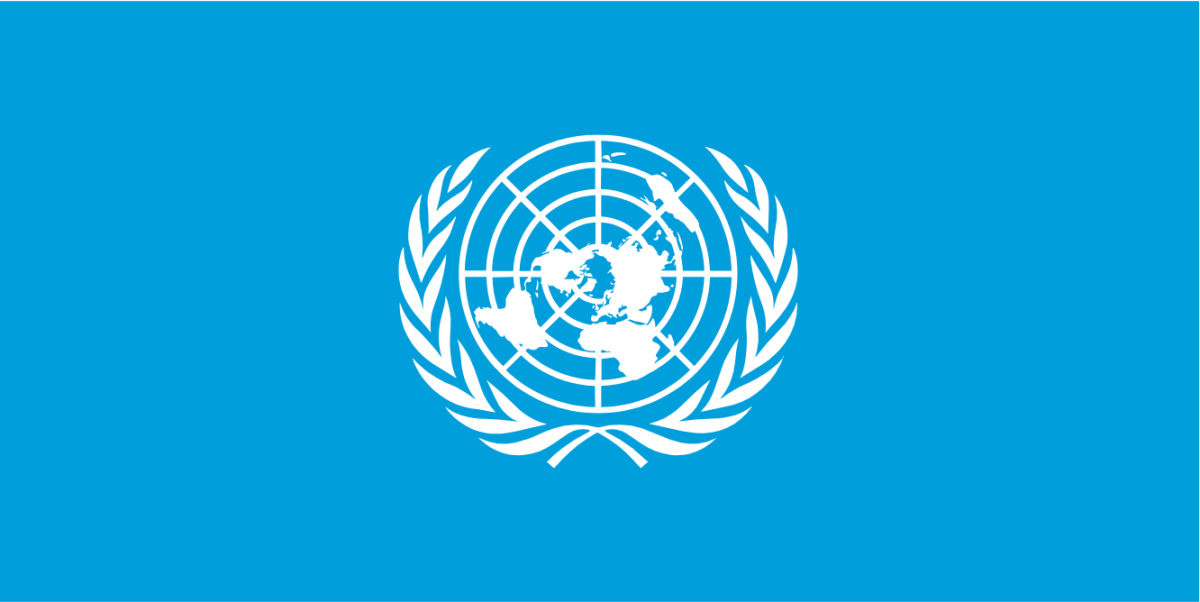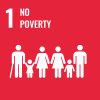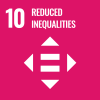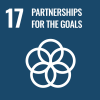
The World Economic and Social Survey 2017 reviews the policy analysis presented in WESS over the past seventy years. The objective is to bring the insights and the historical experience of 70 years of development policy analysis to inform the implementation of the 2030 Agenda for Sustainable Development. This policy brief focuses on the global economy and development trends from the mid-1990s to the late 2000s. There are three major issues that shaped the world economy during that period: the convergence of developing countries’ income with respect to the average income of developed economies; the growing unbalances in the global economy which led eventually to the global financial crisis; and the adoption and implementation of the Millennium Development Goals. A careful retrospective analysis of the underlying factors and policy decisions that framed these major events is particularly relevant to the current debate centred on the implementation of policies for sustainable development.
Emerging economies catching up, but economic diversification remained limited
While the 1990s was characterized by an acceleration of the globalization process, especially in the second half of the decade, fast economic growth remained limited to a few developing countries. At the beginning of the new millennium, however, a larger number of emerging economies experienced fast economic growth, allowing for a narrowing of the income gap with respect to developed economies (see figure 1). Starting in 2002, the pace of growth in per capita GDP was different for different groups of developing regions, but all of them were experiencing faster growth in some sort of ‘catching up’ process with developed economies.  As argued by the Survey and in spite of the shift in the balance of economic power in favour of countries in the global South, it was premature and overly optimistic to expect a flatter world in the near future. A number of countries had undergone a significant convergence towards the advanced economies in terms of their living standards, but other countries, especially in Africa, were still, and are still, lagging behind. More importantly, the success enjoyed by developing economies in achieving economic growth during the first years of the new millennium was followed by severe economic downturns as a result of the global financial crisis. An important lesson from this experience is that economic booms have been transient and can create a false sense of complacency about the future. A continued reminder is in place about the central objective of economic development policy to facilitate the structural transformation of countries towards diversification of production and exports. This remains central to any strategy for sustained economic growth in developing countries. The simple expansion of economic activity does not automatically generate socially desirable economic diversification. Successful development policies should aim at upgrading broad-based production processes through the introduction of technological improvements and improved processes to increase productivity and income. In the agricultural sector, for instance, this would entail dealing simultaneously with agricultural research and extension services, seed and fertilizer delivery systems, marketing and transportation, and access to finance, so as to reduce the traditional constraints faced by traditional agriculture. This reminder—that development is about structural transformation and broad based expansion of income and opportunities—provides a timely message to the implementation of the 2030 Agenda. In particular, diversification in rural economies facilitates the process of adaptation to the effects of climate change. World Economic and Social Survey 2001 (United Nations, 2001) provides a nuanced and important perspective on the implications of different attempts at economic diversification. While noting that “diversification is often seen as an appropriate policy to be pursued in the face of the type of vulnerability that comes from relying heavily on the production and export of one commodity or industrial sector”, the Survey cautions that “inappropriate diversification, directed at reducing vulnerability, but resulting in the creation of industries that are not in line with a country’s true comparative advantage…could itself have adverse economic consequences” ( p. 130).
As argued by the Survey and in spite of the shift in the balance of economic power in favour of countries in the global South, it was premature and overly optimistic to expect a flatter world in the near future. A number of countries had undergone a significant convergence towards the advanced economies in terms of their living standards, but other countries, especially in Africa, were still, and are still, lagging behind. More importantly, the success enjoyed by developing economies in achieving economic growth during the first years of the new millennium was followed by severe economic downturns as a result of the global financial crisis. An important lesson from this experience is that economic booms have been transient and can create a false sense of complacency about the future. A continued reminder is in place about the central objective of economic development policy to facilitate the structural transformation of countries towards diversification of production and exports. This remains central to any strategy for sustained economic growth in developing countries. The simple expansion of economic activity does not automatically generate socially desirable economic diversification. Successful development policies should aim at upgrading broad-based production processes through the introduction of technological improvements and improved processes to increase productivity and income. In the agricultural sector, for instance, this would entail dealing simultaneously with agricultural research and extension services, seed and fertilizer delivery systems, marketing and transportation, and access to finance, so as to reduce the traditional constraints faced by traditional agriculture. This reminder—that development is about structural transformation and broad based expansion of income and opportunities—provides a timely message to the implementation of the 2030 Agenda. In particular, diversification in rural economies facilitates the process of adaptation to the effects of climate change. World Economic and Social Survey 2001 (United Nations, 2001) provides a nuanced and important perspective on the implications of different attempts at economic diversification. While noting that “diversification is often seen as an appropriate policy to be pursued in the face of the type of vulnerability that comes from relying heavily on the production and export of one commodity or industrial sector”, the Survey cautions that “inappropriate diversification, directed at reducing vulnerability, but resulting in the creation of industries that are not in line with a country’s true comparative advantage…could itself have adverse economic consequences” ( p. 130).
Fast growth, but an unbalanced global economy without policy coordination
The growth momentum experienced between 2002 and 2007 proved to be unsustainable. In response to previous episodes of financial crises in the 1990s and early 2000s, developing countries significantly increased foreign reserves as a form of self-insurance. This strategy led to a net transfer of financial resources from South to North while supporting strong consumer demand in the United States, funded by easy credit, which became the major source of growth in the global economy. This pattern of growth led to mounting global imbalances and overleveraged financial institutions, businesses and households. In the absence of effective regulation mechanisms, the bubble burst in 2007, when the United States economy entered in recession, with a rippling effect across the world. The experience during the 2000s demonstrated that, in a world where developing countries play a more significant role and are better integrated, global crises also have more profound implications and more serious consequences for the development of those countries. Integration of economic activities at the global level increases the exposure of developing (and developed countries) to the volatility of global markets, thereby making them inherently vulnerable to economic turmoil. A key challenge for policymakers is thus to establish the mechanisms needed to prevent or reduce the effects of economic shocks within a more integrated world economy. This is particularly important given that once such shocks arise; protection of the poor rarely becomes a policy priority. Negative shocks have immediate and long-lasting impacts on poverty, while the impacts of positive shocks, which tend to be gradual, can be easily cancelled out when a negative shock is inflicted. Therefore, the best macroeconomic policy is one that can counter boom-and-bust cycles in such a way as to prevent or soften negative shocks and provide greater economic stability. In this regard, securing an orderly unwinding of global imbalances and preventing the eruption of financial turmoil continue to require improved international macroeconomic policy coordination. According to a principle that remains relevant today, moving beyond excessive reliance on monetary policies to support national economies requires an improved mix of policies. This argument has been repeatedly advanced in the Survey: benign global rebalancing requires the use of a coordinated short-term stimulus by economies with reasonably large fiscal space.
Concrete and measurable development goals supported by fast economic growth
At the turn of the century, the adoption of the MDGs represented a successful effort to focus attention on human development, as opposed to over reliance on economic growth as suggested by the policies associated with the Washington Consensus. The implementation of the MDGs provides an important lesson going forward: the reconciliation of economic and social objectives for development. The MDG target of halving extreme poverty by 2015 globally, for instance, was achieved by 2010, as a result of rapid economic expansion and adequate social policies in many developing countries. Unfortunately, progress on environmental goals was relatively limited. Another important lesson from the implementation of the MDGs is the role of a strong, reinvigorated and effective global partnership. It was during this period that the question of effectiveness of development assistance, primarily ODA, received greater attention. Soon after the MDGs were agreed, ODA accelerated increasingly up until the global financial crisis in 2008-2009. Political momentum for increasing ODA grew in the early 2000s, notably through an explicit recognition of the need for a substantial increase in ODA. Efforts, led mostly by the Organization for Economic Cooperation and Development (OECD) Development Assistance Committee (DAC), gave rise to the establishment of a set of principles promoting the effectiveness of development assistance. The above commitments notwithstanding, since 2010, total ODA for developing countries has stagnated at about 0.3 per cent of gross national income (GNI) of developed countries, which means there is still a large gap between the existing ODA level and the target of 0.7 per cent. As a result, developing countries continue to face a major shortfall in much-needed financial and technical resources. The issue of ODA and the other facets of the global partnership for development will need continued review, including through agreed mechanisms within the context of the Addis Ababa Action Agenda. Market access and multilateral trade agreements are another important focus of the global partnership for development as envisaged under the MDGs. The Doha Development Agenda, officially launched at the Fourth Ministerial Conference of the World Trade Organization, held at Doha from 9 to 13 November 2001, gained more attention when MDG 8 was formulated. Unfortunately, negotiations of World Trade Organization members on the Agenda have been stalled. A strengthened global partnership for sustainable development requires continuous efforts to ensure that trade supports countries’ development efforts, with special attention to the least developed countries. Most areas relevant to strengthen the global partnership for development to support implementation of the SDGs are part of the Addis Ababa Action Agenda. Much of the success in international development cooperation and policy coherence will depend on the existence of credible monitoring mechanisms including monitoring and follow-up review processes.
Conclusion
The experience of developing countries in the areas of global production and trade during the boom-and-bust cycles of the 1990s and 2000s provides important lessons with respect to the implementation of policies for sustainable development. Some issues for reflection include: (a) the need to improve the national and international mechanisms with capacity to maximize the benefits of globalization for developing countries, while minimizing the adverse impacts of increasing exposure to global economic shocks; (b) the need to support economic diversification in developing countries and resilience to global economic shocks; and (c) the need for a strong, reinvigorated and effective global partnership with the capacity to support progress towards achievement of the SDGs. Prepared by Sergio Vieira, under the supervision of Diana Alarcón UNDESA, DPAD. This document was prepared in the context of the World Economic and Social Survey 2017. The opinions expressed here do not necessarily represent the views of the United Nations.
 Welcome to the United Nations
Welcome to the United Nations


